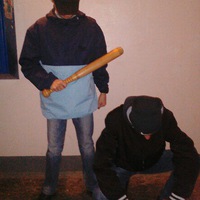
Строение инфузирии органойд и функция
 0
0
 0
0
Ответы на вопрос
 Внимание! Ответы на вопросы дают живые люди. Они могут содержать ошибочную информацию, заблуждения, а также ответы могут быть сгенерированы нейросетями. Будьте внимательны. Если вы уверены, что ответ неверный, нажмите кнопку "Пожаловаться" под ответом.
Внимание! Ответы на вопросы дают живые люди. Они могут содержать ошибочную информацию, заблуждения, а также ответы могут быть сгенерированы нейросетями. Будьте внимательны. Если вы уверены, что ответ неверный, нажмите кнопку "Пожаловаться" под ответом.

Ответ:
Инфузо́рия-ту́фелька (лат. Paramécium caudátum) — вид инфузорий, одноклеточных организмов из группы альвеолят. Иногда инфузориями-туфельками называют и другие виды рода Paramecium. Встречаются в пресных водах. Своё название получила за постоянную форму тела, напоминающую подошву туфли
 0
0
 0
0

Structure of Infusoria
Infusoria, also known as protozoa, are a diverse group of microscopic organisms that belong to the kingdom Protista. They are single-celled eukaryotes that can be found in various aquatic environments, such as freshwater, marine, and soil habitats. Infusoria exhibit a wide range of shapes and sizes, with some species being spherical, while others are elongated or have complex structures.
The structure of infusoria can vary depending on the species, but they generally consist of the following components:
1. Cell Membrane: The outermost layer of the infusoria cell, which separates the internal contents from the external environment.
2. Cytoplasm: The jelly-like substance that fills the cell and contains various organelles.
3. Nucleus: The control center of the cell, which contains the genetic material (DNA) and regulates cellular activities.
4. Contractile Vacuole: A specialized organelle that helps regulate water balance within the cell by expelling excess water.
5. Cilia and Flagella: Hair-like structures that extend from the cell surface and are involved in locomotion and feeding.
6. Food Vacuoles: Small structures within the cytoplasm that contain ingested food particles.
7. Pellicle: A flexible outer covering that provides support and protection to the cell.
8. Trichocysts: Elongated structures that can be discharged for defense or capturing prey.
9. Micronucleus and Macronucleus: Two types of nuclei found in some species of infusoria, each with different functions.
Function of Infusoria
Infusoria play important roles in aquatic ecosystems and have various functions, including:
1. Feeding: Infusoria are heterotrophic organisms, meaning they obtain nutrients by ingesting organic matter. They feed on bacteria, algae, other protists, and organic debris present in their environment. Cilia and flagella help in capturing and moving food particles towards the mouth-like opening called the cytostome.
2. Reproduction: Infusoria reproduce asexually through binary fission, where the cell divides into two identical daughter cells. Some species can also reproduce sexually through conjugation, a process in which genetic material is exchanged between two individuals.
3. Ecological Interactions: Infusoria serve as an important food source for many organisms, including small fish and invertebrates. They also contribute to nutrient cycling by decomposing organic matter and releasing nutrients back into the ecosystem.
4. Indicator Species: Infusoria are often used as bioindicators to assess the water quality of aquatic environments. Changes in their population density and diversity can indicate pollution levels or environmental disturbances.
5. Research and Education: Infusoria are widely studied in the field of biology and serve as model organisms for research on cell biology, genetics, and evolutionary studies. They are also commonly used in educational settings to teach students about microscopic life and basic biological concepts.
It's important to note that the information provided above is based on general knowledge about infusoria. For more specific information about the structure and function of particular species of infusoria, further research and consultation of scientific sources may be necessary.
 0
0
 0
0
Похожие вопросы
Топ вопросов за вчера в категории Биология
Последние заданные вопросы в категории Биология
-
Математика
-
Литература
-
Алгебра
-
Русский язык
-
Геометрия
-
Английский язык
-
Химия
-
Физика
-
Биология
-
Другие предметы
-
История
-
Обществознание
-
Окружающий мир
-
География
-
Українська мова
-
Информатика
-
Українська література
-
Қазақ тiлi
-
Экономика
-
Музыка
-
Право
-
Беларуская мова
-
Французский язык
-
Немецкий язык
-
МХК
-
ОБЖ
-
Психология
-
Физкультура и спорт
-
Астрономия
-
Кыргыз тили
-
Оʻzbek tili

























